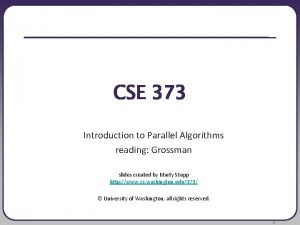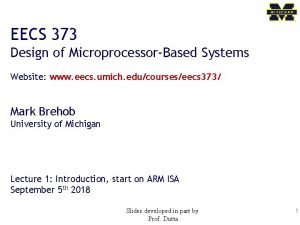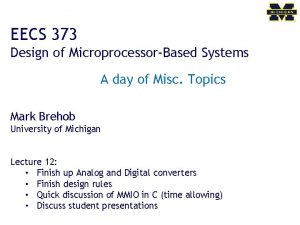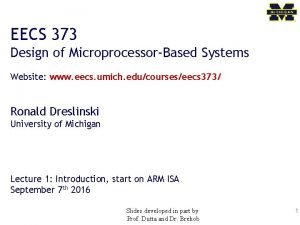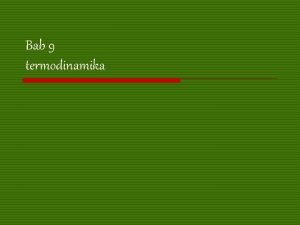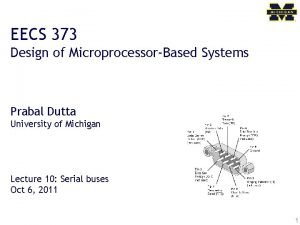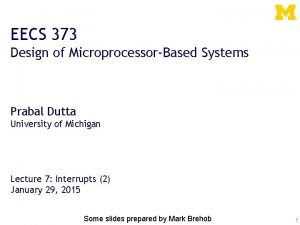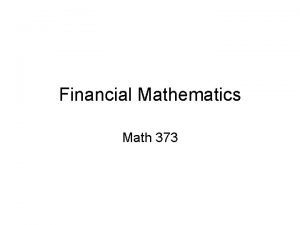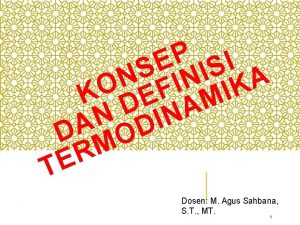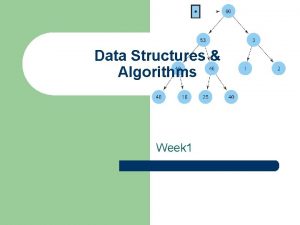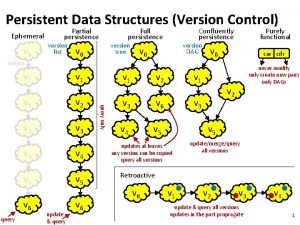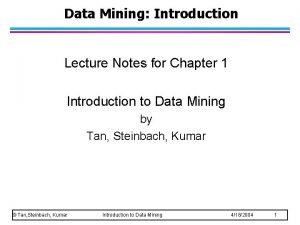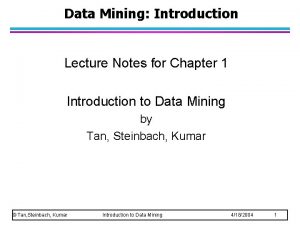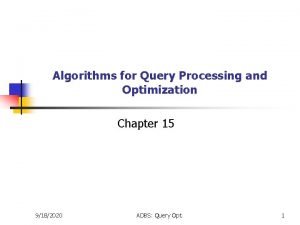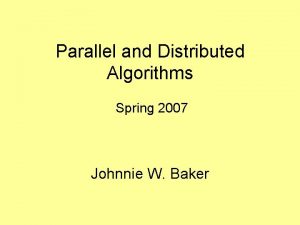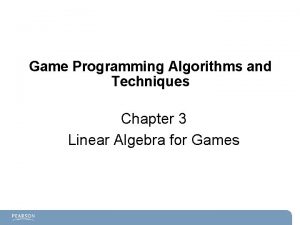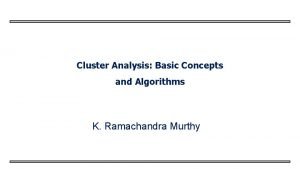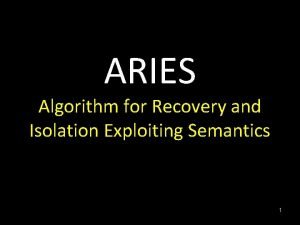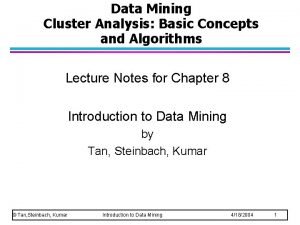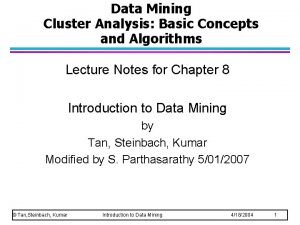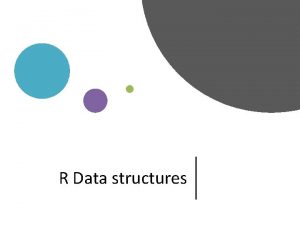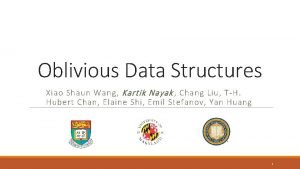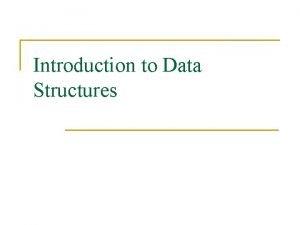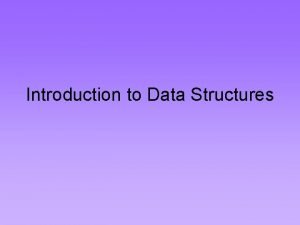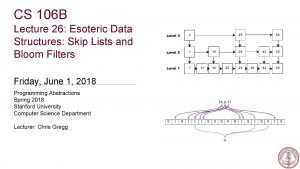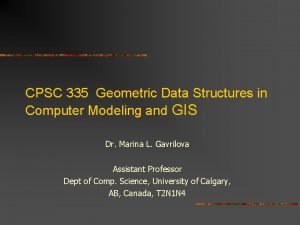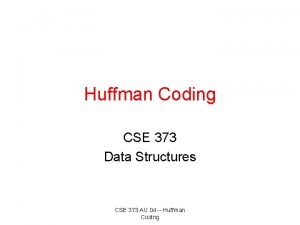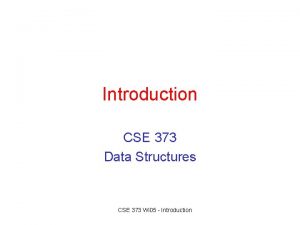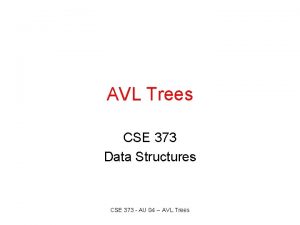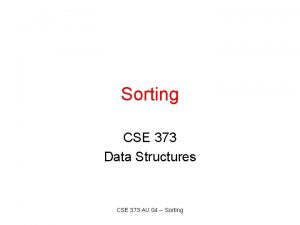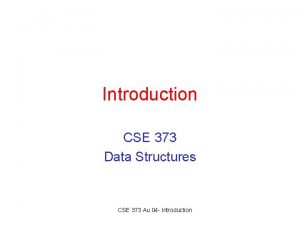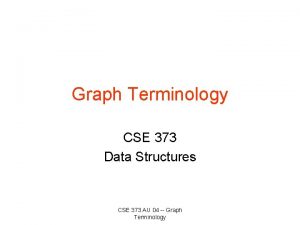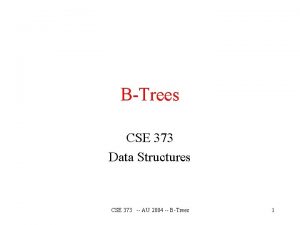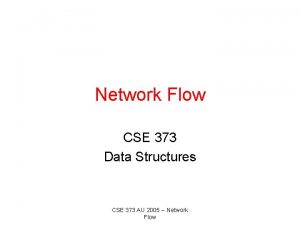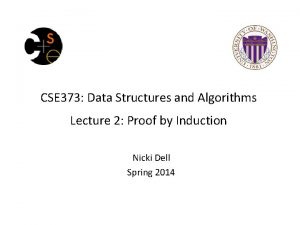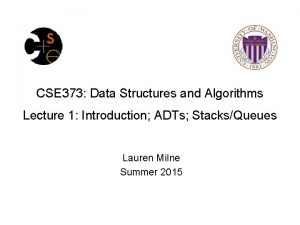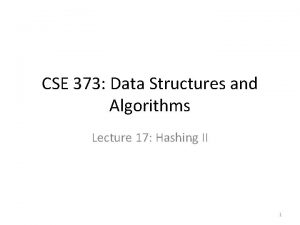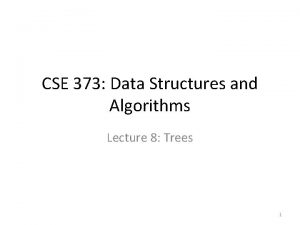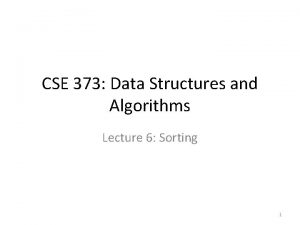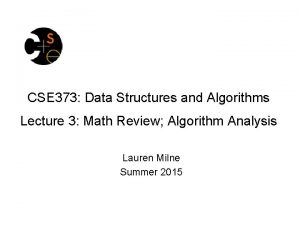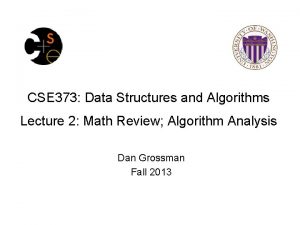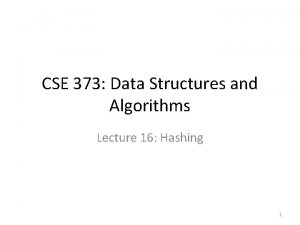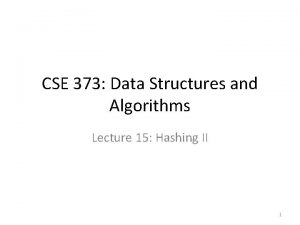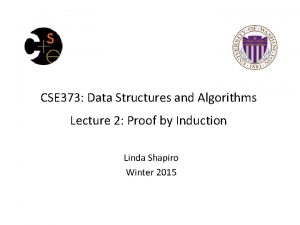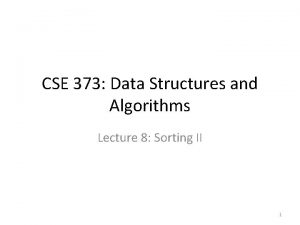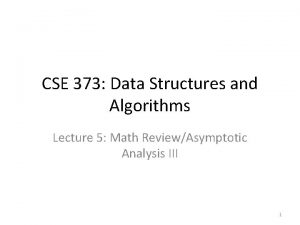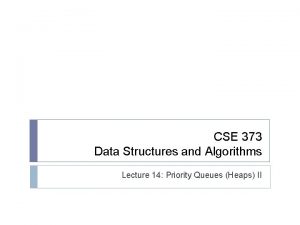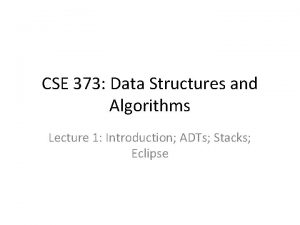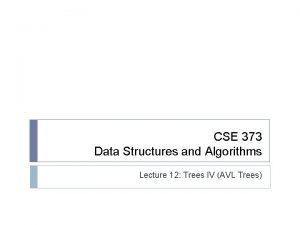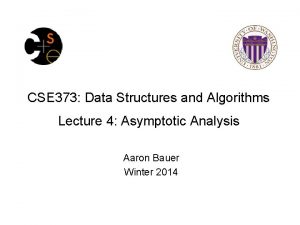CSE 373 Data Structures and Algorithms Lecture 23












































































- Slides: 76

CSE 373 Data Structures and Algorithms Lecture 23: Graphs V Sumber dari : https: //courses. cs. washington. edu/courses/cse 373/12 sp/lectures/0521 -graphs 5/23 -graphs 5. ppt.

Topological Sort 142 312 143 Problem: Find an order in which all these courses can be taken. 311 332 351 Example: 142 143 331 351 311 332 312 421 401 In order to take a course, you must take all of its prerequisites first 2 421 401

Topological Sort In G = (V, E), find total ordering of vertices such that for any edge (v, w), v precedes w in the ordering B C A F D 3 E

Topological Sort: Good Example Any total ordering in which all the arrows go to the right is a valid solution B C A F D E A B F C D Note that F can go anywhere in this list because it is not connected. Also the solution is not unique. 4 E

Topological Sort: Bad Example Any ordering in which an arrow goes to the left is not a valid solution B C A F D E A B F C E NO! 5 D

Only acyclic graphs can be topo sorted A directed graph with a cycle cannot be topologically sorted. B C A F D 6 E

Topological Sort Algorithm: Step 1: Identify vertices that have no incoming edges The “in-degree” of these vertices is zero B A C F D 7 E

Topological Sort Algorithm: Step 1 a Step 1: Identify vertices that have no incoming edges If no such vertices, graph has cycle(s) Topological sort not possible – Halt. B A D 8 C Example of a cyclic graph

Topological Sort Algorithm: Step 1 b Step 1: Identify vertices that have no incoming edges Select one such vertex Select B A C F D 9 E

Topological Sort Algorithm: Step 2: Delete this vertex of in-degree 0 and all its outgoing edges from the graph. Place it in the output. B A C F D 10 E A

Topological Sort Algorithm: Repeat Step 1 and Step 2 until graph is empty Select B C F D 11 E A

B Select B. Copy to sorted list. Delete B and its edges. B C F D 12 E A B

C Select C. Copy to sorted list. Delete C and its edges. C F D 13 E A B C

D Select D. Copy to sorted list. Delete D and its edges. F D 14 E A B C D

E, F Select E. Copy to sorted list. Delete E and its edges. Select F. Copy to sorted list. Delete F and its edges. F E 15 A B C D E F

Done B A C F D E A B C D 16 E F

Topological Sort Algorithm Store each vertex’s In-Degree in an hash table D Initialize queue with all “in-degree=0” vertices While there are vertices remaining in the queue: 1. 2. 3. a) b) c) 4. 17 Dequeue and output a vertex Reduce In-Degree of all vertices adjacent to it by 1 Enqueue any of these vertices whose In-Degree became zero If all vertices are output then success, otherwise there is a cycle.

Pseudocode Initialize D // Mapping of vertex to its in-degree Queue Q : = [Vertices with in-degree 0] while not. Empty(Q) do x : = Dequeue(Q) Output(x) y : = A[x]; // y gets a linked list of adjacent vertices while y null do D[y. value] : = D[y. value] – 1; if D[y. value] = 0 then Enqueue(Q, y. value); y : = y. next; endwhile 18

Topological Sort with Queue (before): Queue (after): 1, 6 1 1 2 0 1 2 2 4 Answer: 19 0 3 6 5

Topological Sort with Queue (before): 1, 6 Queue (after): 6, 2 0 1 1 2 4 Answer: 1 20 0 3 6 5

Topological Sort with Queue (before): 6, 2 Queue (after): 2 0 1 1 1 2 4 Answer: 1, 6 21 0 3 6 5

Topological Sort with Queue (before): 2 Queue (after): 3 0 2 0 1 1 4 0 2 Answer: 1, 6, 2 22 0 3 6 5

Topological Sort with Queue (before): 3 Queue (after): 4 0 2 0 1 0 4 0 0 3 1 6 5 Answer: 1, 6, 2, 3 23

Topological Sort with Queue (before): 4 Queue (after): 5 0 2 0 1 0 4 0 0 3 0 6 5 Answer: 1, 6, 2, 3, 4 24

Topological Sort with Queue (before): 5 Queue (after): 0 2 0 1 0 4 0 0 3 0 6 5 Answer: 1, 6, 2, 3, 4, 5 25

Topological Sort Fails (cycle) Queue (before): Queue (after): 1 1 2 2 0 1 3 2 1 4 Answer: 26 5

Topological Sort Fails (cycle) Queue (before): 1 Queue (after): 2 0 2 2 0 1 3 1 1 4 Answer: 1 27 5

Topological Sort Fails (cycle) Queue (before): 2 Queue (after): 0 2 0 1 1 3 1 1 4 Answer: 1, 2 28 5

Topological Sort Runtime? Initialize D // Mapping of vertex to its in-degree Queue Q : = [Vertices with in-degree 0] while not. Empty(Q) do x : = Dequeue(Q) Output(x) y : = A[x]; // y gets a linked list of adjacent vertices while y null do D[y. value] : = D[y. value] – 1; if D[y. value] = 0 then Enqueue(Q, y. value); y : = y. next; endwhile 29

Topological Sort Analysis Initialize In-Degree map: O(|V| + |E|) Initialize Queue with In-Degree 0 vertices: O(|V|) Dequeue and output vertex: Reduce In-Degree of all vertices adjacent to a vertex and Enqueue any In-Degree 0 vertices: |V| vertices, each takes only O(1) to dequeue and output: O(|V|) O(|E|) Runtime = O(|V| + |E|) 30 Linear!

Minimum Spanning Tree tree: a connected, directed acyclic graph spanning tree: a subgraph of a graph, which meets the constraints to be a tree (connected, acyclic) and connects every vertex of the original graph minimum spanning tree: a spanning tree with weight less than or equal to any other spanning tree for the given graph 31

Minimum Spanning Tree: Applications Consider a cable TV company laying cable to a new neighborhood Can only bury the cable only along certain paths Some of paths may be more expensive (i. e. longer, harder to install) A spanning tree for that graph would be a subset of those paths that has no cycles but still connects to every house. Similar situations 32 Installing electrical wiring in a house Installing computer networks between cities Building roads between neighborhoods

Spanning Tree Problem Input: An undirected graph G = (V, E). G is connected. Output: T subset of E such that 33 (V, T) is a connected graph (V, T) has no cycles

Spanning Tree Psuedocode spanning. Tree(): pick random vertex v. T : = {} spanning. Tree(v, T) return T. spanning. Tree(v, T): mark v as visited. for each neighbor vi of v where there is an edge from v: if vi is not visited add edge (v, vi) to T. spanning. Tree(vi, T) return T. 34

Example of Depth First Search ST(1) 2 1 3 7 4 6 5 35

Example Step 2 ST(1) ST(2) 2 1 3 7 4 6 5 {1, 2} 36

Example Step 3 2 1 3 7 4 6 5 {1, 2} {2, 7} 37 ST(1) ST(2) ST(7)

Example Step 4 2 1 3 7 4 6 5 {1, 2} {2, 7} {7, 5} 38 ST(1) ST(2) ST(7) ST(5)

Example Step 5 2 1 3 7 4 6 5 {1, 2} {2, 7} {7, 5} {5, 4} 39 ST(1) ST(2) ST(7) ST(5) ST(4)

Example Step 6 2 1 3 7 4 6 5 {1, 2} {2, 7} {7, 5} {5, 4} {4, 3} 40 ST(1) ST(2) ST(7) ST(5) ST(4) ST(3)

Example Step 7 2 1 3 7 4 6 5 {1, 2} {2, 7} {7, 5} {5, 4} {4, 3} 41 ST(1) ST(2) ST(7) ST(5) ST(4) ST(3)

Example Step 8 2 1 3 7 4 6 5 {1, 2} {2, 7} {7, 5} {5, 4} {4, 3} 42 ST(1) ST(2) ST(7) ST(5) ST(4)

Example Step 9 2 1 3 7 4 6 5 {1, 2} {2, 7} {7, 5} {5, 4} {4, 3} 43 ST(1) ST(2) ST(7) ST(5) ST(4)

Example Step 10 2 1 3 7 4 6 5 {1, 2} {2, 7} {7, 5} {5, 4} {4, 3} 44 ST(1) ST(2) ST(7) ST(5)

Example Step 11 2 1 3 7 4 6 5 {1, 2} {2, 7} {7, 5} {5, 4} {4, 3} {5, 6} 45 ST(1) ST(2) ST(7) ST(5) ST(6)

Example Step 12 2 1 3 7 4 6 5 {1, 2} {2, 7} {7, 5} {5, 4} {4, 3} {5, 6} 46 ST(1) ST(2) ST(7) ST(5) ST(6)

Example Step 13 2 1 3 7 4 6 5 {1, 2} {2, 7} {7, 5} {5, 4} {4, 3} {5, 6} 47 ST(1) ST(2) ST(7) ST(5)

Example Step 14 2 1 3 7 4 6 5 {1, 2} {2, 7} {7, 5} {5, 4} {4, 3} {5, 6} 48 ST(1) ST(2) ST(7)

Example Step 15 ST(1) ST(2) 2 1 3 7 4 6 5 {1, 2} {2, 7} {7, 5} {5, 4} {4, 3} {5, 6} 49

Example Step 16 ST(1) 2 1 3 7 4 6 5 {1, 2} {2, 7} {7, 5} {5, 4} {4, 3} {5, 6} 50

Minimum Spanning Tree Problem Input: Undirected Graph G = (V, E) and a cost function C from E to non-negative real numbers. C(e) is the cost of edge e. Output: A spanning tree T with minimum total cost. That is: T that minimizes 51

Observations About Spanning Trees For any spanning tree T, inserting an edge enew not in T creates a cycle But removing any edge eold from the cycle gives back a spanning tree 52 If enew has a lower cost than eold, we have progressed!

Find the MST 1 A B 7 2 11 12 9 C 10 53 H 5 3 D 6 F 13 4 G 4 E

Two Different Approaches 54 Prim’s Algorithm Kruskals’ Algorithm Looks familiar! Completely different!

Prim’s Algorithm Idea: Grow a tree by adding an edge from the “known” vertices to the “unknown” vertices. Pick the edge with the smallest weight. G v known 55

Prim’s Algorithm Starting from empty T, choose a vertex at random and initialize V = {A}, T ={} A 10 5 1 8 B 1 C 3 D 6 1 4 F 56 2 E 6 G

Prim’s Algorithm Choose vertex u not in V such that edge weight from u to a vertex in V is minimal (greedy!) A V = {A, C} 10 5 1 T = { (A, C) } 8 B 1 C 3 D 6 1 4 F 57 2 E 6 G

Prim’s Algorithm Repeat until all vertices have been chosen V = {A, C, D} A 10 T= { (A, C), (C, D)} 5 1 8 B 1 C 3 D 6 1 4 F 58 2 E 6 G

Prim’s Algorithm V = {A, C, D, E} T = { (A, C), (C, D), (D, E) } A 10 5 1 8 B 1 C 3 D 6 1 4 F 59 2 E 6 G

Prim’s Algorithm V = {A, C, D, E, B} T = { (A, C), (C, D), (D, E), (E, B) } A 10 5 1 8 B 1 C 3 D 6 1 4 F 60 2 E 6 G

Prim’s Algorithm V = {A, C, D, E, B, F} T = { (A, C), (C, D), (D, E), (E, B), (B, F) }A 10 5 1 8 B 1 C 3 D 6 1 4 F 61 2 E 6 G

Prim’s Algorithm V = {A, C, D, E, B, F, G} T = { (A, C), (C, D), (D, E), A 10 (E, B), (B, F), (E, G) } 1 8 B 1 5 C 3 D 6 1 4 F 62 2 E 6 G

Prim’s Algorithm Final Cost: 1 + 3 + 4 + 1 + 6 = 16 A 10 5 1 8 B 1 C 3 D 6 1 4 F 63 2 E 6 G

Prim’s Algorithm Analysis How is it different from Djikstra's algorithm? If the step that removes unknown vertex with minimum distance is done with binary heap, the running time is: O(|E|log |V|) 64

Kruskal’s MST Algorithm Idea: Grow a forest out of edges that do not create a cycle. Pick an edge with the smallest weight. G=(V, E) v 65

Example of Kruskal 1 1 3 2 1 3 3 4 7 3 3 0 1 6 2 5 4 2 {7, 4} {2, 1} {7, 5} {5, 6} {5, 4} {1, 6} {2, 7} {2, 3} {3, 4} {1, 5} 0 1 1 2 2 3 3 4 66

Example of Kruskal 2 1 3 3 4 7 3 3 0 1 6 2 5 4 2 {7, 4} {2, 1} {7, 5} {5, 6} {5, 4} {1, 6} {2, 7} {2, 3} {3, 4} {1, 5} 0 1 1 2 2 3 3 4 67

Example of Kruskal 2 1 3 3 4 7 3 3 0 1 6 2 5 4 2 {7, 4} {2, 1} {7, 5} {5, 6} {5, 4} {1, 6} {2, 7} {2, 3} {3, 4} {1, 5} 0 1 1 2 2 3 3 4 68

Example of Kruskal 3 1 3 2 1 3 3 4 7 3 3 0 1 6 2 5 4 2 {7, 4} {2, 1} {7, 5} {5, 6} {5, 4} {1, 6} {2, 7} {2, 3} {3, 4} {1, 5} 0 1 1 2 2 3 3 4 69

Example of Kruskal 4 1 3 2 1 3 3 4 7 3 3 0 1 6 2 5 4 2 {7, 4} {2, 1} {7, 5} {5, 6} {5, 4} {1, 6} {2, 7} {2, 3} {3, 4} {1, 5} 0 1 1 2 2 3 3 4 70

Example of Kruskal 5 1 3 2 1 3 3 4 7 3 3 0 1 6 2 5 4 2 {7, 4} {2, 1} {7, 5} {5, 6} {5, 4} {1, 6} {2, 7} {2, 3} {3, 4} {1, 5} 0 1 1 2 2 3 3 4 71

Example of Kruskal 6 1 3 2 1 3 3 4 7 3 3 0 1 6 2 5 4 2 {7, 4} {2, 1} {7, 5} {5, 6} {5, 4} {1, 6} {2, 7} {2, 3} {3, 4} {1, 5} 0 1 1 2 2 3 3 4 72

Example of Kruskal 7 1 3 2 1 3 3 4 7 3 3 0 1 6 2 5 4 2 {7, 4} {2, 1} {7, 5} {5, 6} {5, 4} {1, 6} {2, 7} {2, 3} {3, 4} {1, 5} 0 1 1 2 2 3 3 4 73

Example of Kruskal 7 1 3 2 1 3 3 4 7 3 3 0 1 6 2 5 4 2 {7, 4} {2, 1} {7, 5} {5, 6} {5, 4} {1, 6} {2, 7} {2, 3} {3, 4} {1, 5} 0 1 1 2 2 3 3 4 74

Example of Kruskal 8, 9 1 3 2 1 3 3 4 7 3 3 0 1 6 2 5 4 2 {7, 4} {2, 1} {7, 5} {5, 6} {5, 4} {1, 6} {2, 7} {2, 3} {3, 4} {1, 5} 0 1 1 2 2 3 3 4 75

Kruskal's Algorithm Implementation Kruskals(): sort edges in increasing order of length (e 1, e 2, e 3, . . . , em). T : = {}. for i = 1 to m if ei does not add a cycle: add ei to T. return T. How can we determine that adding ei to T won't add a cycle? 76
 Cse 373
Cse 373 Professor ajit diwan
Professor ajit diwan Cos423
Cos423 Data structures and algorithms tutorial
Data structures and algorithms tutorial Information retrieval data structures and algorithms
Information retrieval data structures and algorithms Data structures and algorithms bits pilani
Data structures and algorithms bits pilani Ajit diwan
Ajit diwan Data structures and algorithms
Data structures and algorithms Data structures and algorithms
Data structures and algorithms Ian munro waterloo
Ian munro waterloo Signature file structure in information retrieval system
Signature file structure in information retrieval system Data structures and algorithms
Data structures and algorithms Algorithms + data structures = programs
Algorithms + data structures = programs Analysis of algorithms lecture notes
Analysis of algorithms lecture notes Introduction to algorithms lecture notes
Introduction to algorithms lecture notes 01:640:244 lecture notes - lecture 15: plat, idah, farad
01:640:244 lecture notes - lecture 15: plat, idah, farad Analogous structure
Analogous structure Eecs 373
Eecs 373 Eecs 511
Eecs 511 Eecs 373
Eecs 373 Suatu sistem menyerap kalor 1500 kalori dari lingkungannya
Suatu sistem menyerap kalor 1500 kalori dari lingkungannya Dte vs dce pinout
Dte vs dce pinout Eecs 373
Eecs 373 Math 373
Math 373 Suhu tiga mol suatu gas ideal adalah 373 k
Suhu tiga mol suatu gas ideal adalah 373 k Eecs 373
Eecs 373 Drg 373
Drg 373 Stream data model
Stream data model Explain conditional macro expansion with example
Explain conditional macro expansion with example Assembler data structures
Assembler data structures Data structures and abstractions with java
Data structures and abstractions with java Adts, data structures, and problem solving with c++
Adts, data structures, and problem solving with c++ Data structures and algorithm
Data structures and algorithm Persistent and ephemeral data structures
Persistent and ephemeral data structures Cse 572 data mining
Cse 572 data mining Cse 572 data mining
Cse 572 data mining Exploratory data analysis lecture notes
Exploratory data analysis lecture notes Bayesian classification in data mining lecture notes
Bayesian classification in data mining lecture notes Data mining lecture notes
Data mining lecture notes Data visualization lecture
Data visualization lecture Data mining lecture notes
Data mining lecture notes Data mining lecture notes
Data mining lecture notes Computational thinking algorithms and programming
Computational thinking algorithms and programming 1001 design
1001 design Association analysis: basic concepts and algorithms
Association analysis: basic concepts and algorithms Computer arithmetic: algorithms and hardware designs
Computer arithmetic: algorithms and hardware designs Algorithms for select and join operations
Algorithms for select and join operations Algorithms and flowcharts
Algorithms and flowcharts Undecidable problems and unreasonable time algorithms.
Undecidable problems and unreasonable time algorithms. Cluster analysis basic concepts and algorithms
Cluster analysis basic concepts and algorithms Probabilistic analysis and randomized algorithms
Probabilistic analysis and randomized algorithms Design and analysis of algorithms introduction
Design and analysis of algorithms introduction Algorithms for query processing and optimization
Algorithms for query processing and optimization Synchronization algorithms and concurrent programming
Synchronization algorithms and concurrent programming Parallel and distributed algorithms
Parallel and distributed algorithms Lerp
Lerp Cluster analysis basic concepts and algorithms
Cluster analysis basic concepts and algorithms Cluster analysis basic concepts and algorithms
Cluster analysis basic concepts and algorithms Aries recovery algorithm
Aries recovery algorithm Dsp algorithms and architecture notes
Dsp algorithms and architecture notes Boris epshtein
Boris epshtein Exercise 24
Exercise 24 Binary search in design and analysis of algorithms
Binary search in design and analysis of algorithms Introduction to the design and analysis of algorithms
Introduction to the design and analysis of algorithms Undecidable problems and unreasonable time algorithms
Undecidable problems and unreasonable time algorithms Design and analysis of algorithms
Design and analysis of algorithms Design and analysis of algorithms
Design and analysis of algorithms Cluster analysis basic concepts and algorithms
Cluster analysis basic concepts and algorithms Design and analysis of algorithms
Design and analysis of algorithms Btech smart class.com
Btech smart class.com Types of data structures in r
Types of data structures in r Oblivious data structures
Oblivious data structures Linux kernel data structures
Linux kernel data structures Introduction to data structures
Introduction to data structures Introduction to data structures
Introduction to data structures Esoteric data structures
Esoteric data structures Geometric data structures
Geometric data structures
